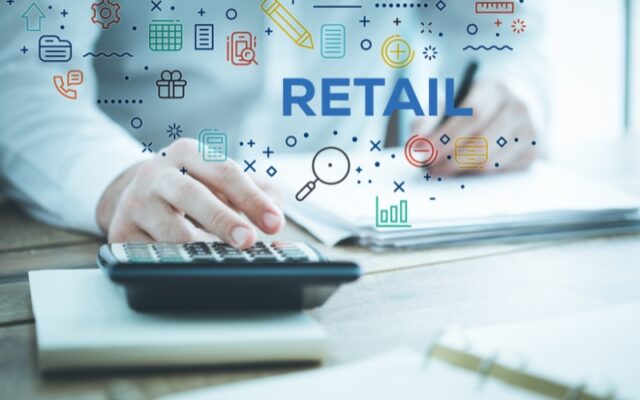Data analytics in retail is the process of collecting, analyzing, and interpreting data from customers to identify patterns and trends. This information can be used to improve marketing strategies, create new products or services, and increase sales.
Data analytics involves gathering large amounts of data from a variety of sources including customer surveys, store records, online sales platforms, and more. This data is then analyzed using specialized software to identify patterns and trends that might help retailers better understand their customers’ wants and needs.
The goal of data analytics in retail is to use these insights to create targeted campaigns that will result in increased sales and customer loyalty.
One example of how retailers use data analytics is through predictive analysis. Predictive analysis uses historical sales data combined with current market trends to forecast future purchasing behavior.
Retailers can use this information to develop more effective marketing campaigns as well as determine which products or services should be offered at any given time.
Additionally, predictive analysis can also help retailers anticipate changes in the market before they occur so they can stay ahead of their competition.
Click through this link for more information https://www.lynxanalytics.com/blog/how-data-analytics-can-future-proof-your-retail-business.
Benefits of Data Analytics in Retail

Data analytics has revolutionized the way businesses function in the modern world, and this is especially true for retail.
With its ability to reveal insights into customer behavior and preferences, data analytics can provide retailers with a powerful tool for uncovering opportunities to drive sales and increase profits. Here are some of the key benefits that data analytics can bring to retail operations:
Improved Decision Making: Data analytics provides retailers with detailed insights into customer behavior and preferences that can be used to inform strategic decisions about product lines, pricing strategies, marketing campaigns, store locations, and more. With access to this level of information, retailers can make smarter decisions that better meet their customer’s needs while also increasing their bottom line.
Enhanced Customer Experience: The insights gained from data analysis also allow retailers to improve their customer’s shopping experience by offering targeted promotions or discounts based on past purchases or browsing habits. This helps create loyalty among customers who will be more likely to return when they receive offers tailored specifically towards them.
Increased Efficiency: Data analysis can help retailers streamline operations by providing valuable insight into how best to manage inventory levels or identify areas of waste in production processes so they can run their businesses more efficiently while still providing a high-quality product.
Challenges of Using Data Analytics in Retail
Retail is one of the most competitive industries, and data analytics can be a powerful tool to help retailers stay ahead of the competition. In recent years, more and more retailers have adopted data analytics as part of their operations to better understand customer behavior and optimize their marketing strategies.
However, while data analytics can provide valuable insights for retail businesses, it also comes with its own set of challenges.
One major challenge that many retailers face when using data analytics is ensuring the quality and accuracy of the data they collect. Poorly collected or incomplete datasets can lead to inaccurate results which could ultimately result in poor decision-making and hurt a company’s bottom line.
Retailers need to ensure that they are collecting complete datasets from reliable sources to get accurate results from their analysis.
Another challenge for retailers is keeping up with industry trends. With new technologies emerging all the time, it can be difficult for retailers to keep up with what works best for their customers and market segmentation strategies.
Data analytics can help identify trends in real-time so that companies can quickly adjust their marketing approach or product offering accordingly but this requires significant investment in both time and resources on an ongoing basis if they want to remain competitive within the industry.
Types of Data Analysis Used in the Retail Industry
Data analysis is an important element of the retail industry, enabling retailers to gain insight into customer purchasing habits and preferences.
By understanding their consumers better, retailers can use data analysis to inform decision-making and improve their bottom line. There are a variety of different types of data analysis used in the retail industry, each bringing its unique benefits.
One type of data analysis used in the retail sector is predictive analytics. This involves using historical customer data to anticipate future trends and behaviors that can be leveraged for marketing and merchandising purposes.
Predictive analytics can help retailers identify potential growth opportunities or identify products that should be dropped from the inventory. By understanding what customers are likely to buy next, retailers can adjust their strategies accordingly to increase sales and profitability.
Another type of data analysis commonly used by retail businesses is segmentation analysis. This involves grouping customers into categories according to age, gender, income level, or any other demographic criteria deemed relevant by a retailer’s marketing team.
Segmentation allows businesses to tailor their product offerings according to each customer group’s needs while also providing insights into how effective their current strategies are at reaching different target audiences.
Technologies Used to Analyze Data in the Retail Industry
Data analysis is becoming increasingly important in the retail industry. With the rise of online shopping and increased competition, retailers need to leverage data to make smart decisions about their operations, marketing strategies, and customer experience. This means that understanding and using various technologies to analyze data is essential for staying competitive.
One such technology that retailers use to analyze data is artificial intelligence (AI). AI algorithms can be used to identify patterns within large datasets and predict future trends.
This helps retailers make more informed decisions about which products or services they should offer, as well as how they should market them. AI can also be used for personalization, allowing retailers to customize their offerings based on a customer’s past behaviors or preferences.
Another technology used for analyzing data in the retail industry is predictive analytics. Predictive analytics uses statistical models and machine learning algorithms to detect patterns in customer behavior and predict future outcomes based on this information.
Retailers can use predictive analytics to better understand their customers’ needs and develop targeted campaigns aimed at driving sales growth or improving customer loyalty programs.
Conclusion
Data analytics in retail has become a powerful tool for businesses to understand their customers and make better decisions. By leveraging large amounts of data, businesses can gain insights into customer behavior and preferences, improve marketing strategies, and optimize operations.
These insights can result in increased sales, improved customer satisfaction and loyalty, and more efficient use of resources. Data analytics can also help retailers identify new opportunities for growth through predictive analysis.
With the right data tools and strategies in place, retailers will continue to be well-positioned to optimize their operations and maximize efficiency.









